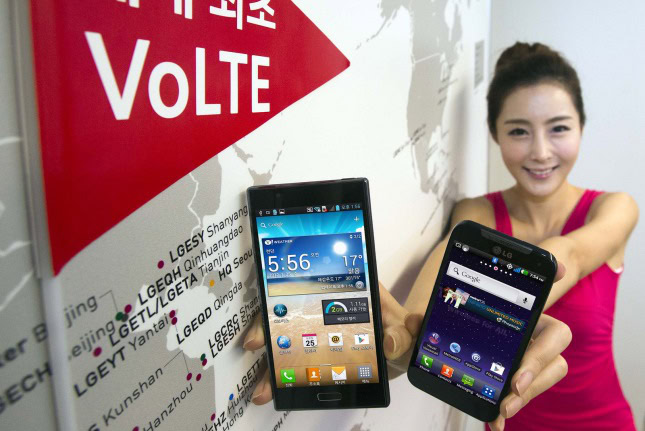Affiliate links on Android Authority may earn us a commission. Learn more.
How it works: Voice over LTE (VoLTE)

As almost everyone at this point knows, Long Term Evolution (LTE) cellular technology is the next generation of mobile networks. There will continue to be iterative advances, like LTE Advanced, but the core LTE technology is the new global standard for the foreseeable future.
LTE provides a wide array of improvements versus previous network standards, but there is still a major obstacle in the path to LTE-only cellular networks. Newer cellular standards have always included a dedicated communications channel to carry voice calls and operate under roughly the same principles as an analogue phone switchboard. LTE is an all-IP based network standard, so it it does not natively support the antiquated circuit switched protocol. Network providers must revise their entire approach to voice call networks in order to resolve the incompatibility.
Voice over LTE (VoLTE) aims to provide the ability to handle cellular voice calls over LTE. Most major LTE network providers have announced their intentions to at least begin to deploy VoLTE within the next couple years. For a number of reasons, enabling voice calling over LTE is not so simple as just using a VOIP connection. Carriers need to be able to pass or hand off voice calls, without interruption, between the LTE networks and the legacy 2G and 3G networks. Carriers also want to protect the revenue they get from voice services; so, it is to their advantage to use a dedicated protocol like VoLTE rather than over-the-top VOIP solution.
VoLTE uses the IP Multimedia Core Network Subsystem (IMS) architectural framework. IMS allows for ubiquitous multimedia access using a common IP interface. This greatly simplifies network management and provides better developer accessibility. Using this framework, connections over different protocols can be bridged together. With the IMS framework, VoLTE is able to inter-operate with circuit switched voice networks without having any dependency on or requirement for them. Additionally, the common IP interface of IMS will allow VoLTE to inter-operate with other voice networking technologies even after legacy circuit switched networks are finally phased out.
Until LTE network footprints expand to meet or eclipse those of their 2G and 3G predecessors, voice network interoperability is only the first step in enabling VoLTE. While engaged in a voice call, a user might pass outside of an LTE coverage area, so that call needs to be able to fall back onto legacy networks. The VoLTE standard accomplishes this with Single Radio Voice Call Continuity (SR-VCC). With SR-VCC, when an LTE tower determines that a user might leave the coverage area during an active connection, it leverages the IMS framework to initiate a second connection over the legacy standards. Both connections are maintained until the LTE signal is lost, the LTE tower determines the user will not leave the coverage area, or the voice call ends.
SR-VCC requires the network provider to have the IMS framework in place, but it also impacts device design. To support SR-VCC, devices must not only be able to connect to both the LTE and the legacy networks, but be able to connect to both at the same time. This is governed by the antenna architecture in the device. In order to conserve space, some devices, like the iPhone 5, will have 3G and 4G traffic sharing the same physical antennae, toggling between the two standards as needed. SR-VCC requires devices to have dedicated antennae for both 3G and 4G connections. Devices that support simultaneous 3G voice and 4G data are already able to support SR-VCC.
VoLTE also supports wideband audio, or HD Voice. HD Voice more than doubles the audio frequency range for voice calls versus legacy narrowband technologies. Unlike the network upgrades many carriers have used to bring HD Voice to their 3G networks, LTE networks are able to encode wideband audio natively because they are not constrained by the limits of circuit switched networks. The IMS framework behind VoLTE allows inoperable HD Voice calling between any compatible endpoints – other VoLTE devices, devices using HD Voice over 3G, or over the top services like Skype. In HD Voice calling, only connections between capable devices are at the higher quality and connections in which either device is not capable are at the lower quality for both devices.
VoLTE serves two main purposes for the industry. First, it provides a mechanism for network providers to more seamlessly integrate their existing 2G and 3G networks with their new and developing LTE networks. This is a largely short-term interest though. In the long-term, VoLTE provides network providers with the means to completely replace their legacy networks. For consumers, this means a future of LTE-only devices with increased interoperability and higher quality voice calling.